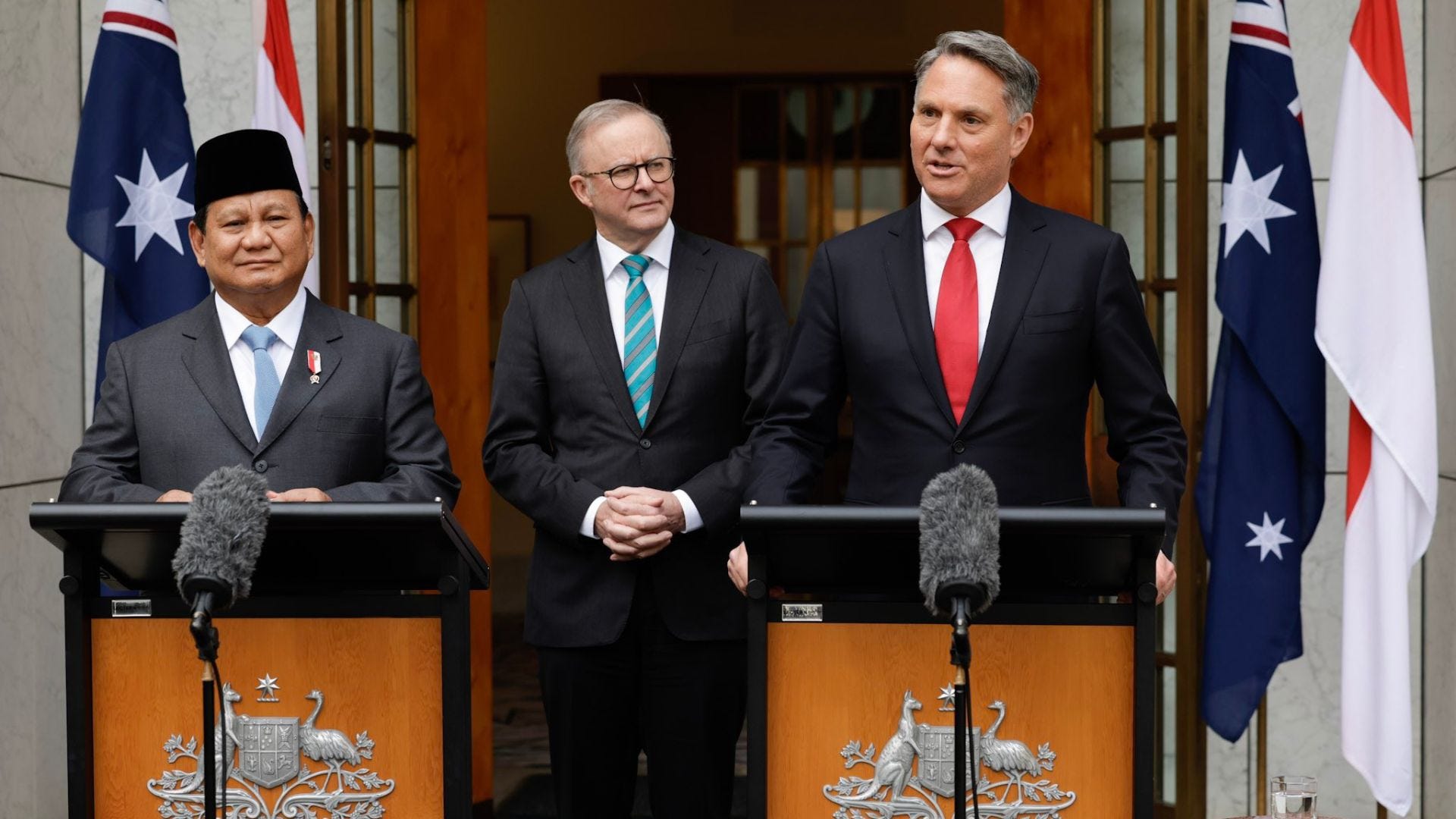Indonesia-Australia Defense Pact: A Strategic Move to Counter China in the South China Sea
Assessing regional partnerships and multilateral efforts to address china's growing influence in the Indo-Pacific region
The finalization of a significant defense pact between Indonesia and Australia, announced on August 20, 2024, marks a pivotal moment in the shifting dynamics of the Indo-Pacific region, particularly concerning the South China Sea. This agreement reflects the broader strategic realignments occurring among nations in response to China's assertive behavior in the region. As Beijing continues to fortify its claims over the South China Sea, regional powers are increasingly collaborating to counterbalance China’s influence. This article delves into the Indonesia-Australia pact within the larger context of international efforts to maintain stability and uphold the rule of law in the Indo-Pacific.

The finalization of the Indonesia-Australia defense pact is a significant step in the broader strategy to counter China’s growing influence in the South China Sea and the wider Indo-Pacific region. This agreement, along with other regional and international efforts, reflects a strategic realignment aimed at preserving a rules-based order and preventing the dominance of any single power in this critical maritime domain.
Indonesia-Australia Defense Pact: A Closer Look
The defense agreement between Indonesia and Australia underscores the deepening military cooperation between these two nations. Details of the defence agreement, which has been in the works since February 2023, have not been announced. The pact involves a wide range of areas, including joint military exercises, intelligence sharing, and defense technology collaboration. Both countries are strategically positioned in the Indo-Pacific, with Indonesia serving as the gateway between the Pacific and Indian Oceans, and Australia being a key ally of the United States in the region.
The pact also signifies a mutual recognition of the growing security challenges posed by China's maritime expansionism. Indonesia, while not a direct claimant in the South China Sea dispute, has seen its interests threatened by China's incursions into its exclusive economic zone (EEZ) near the Natuna Islands. Australia, on the other hand, has been a vocal critic of China’s actions in the South China Sea and has actively participated in freedom of navigation operations (FONOPs) alongside the United States.
This defense agreement is a clear message to Beijing that Indonesia and Australia are committed to safeguarding their territorial integrity and supporting a rules-based order in the region. However, this partnership is not an isolated case; it fits into a broader pattern of regional and extra-regional powers strengthening ties to deter China's aggressive stance in the South China Sea.
Regional Partnerships: Building a United Front
The Indonesia-Australia pact is part of a larger network of alliances and partnerships that have been developing in response to China's actions. Key among these is the Quadrilateral Security Dialogue (Quad), which includes the United States, Japan, India, and Australia. The Quad has gained significant momentum in recent years, with members conducting joint military exercises and engaging in strategic dialogues aimed at ensuring a free and open Indo-Pacific.
Japan, for instance, has been particularly active in reinforcing its security ties with Southeast Asian nations, offering maritime patrol vessels and conducting joint exercises. Tokyo’s efforts are geared towards bolstering the maritime capabilities of these countries to resist Chinese encroachment. India, too, has increased its naval presence in the region, recognizing that the security of the Indian Ocean is closely linked to the broader Indo-Pacific dynamics.
The Association of Southeast Asian Nations (ASEAN) plays a critical role as well. While ASEAN's response to China’s actions has been somewhat muted due to internal divisions, individual member states like Vietnam and the Philippines have been increasingly assertive. Vietnam, in particular, has strengthened its maritime defense capabilities and deepened its partnerships with the United States and Japan. The Philippines, despite its complex relationship with China, has pursued closer defense ties with the United States under its Enhanced Defense Cooperation Agreement (EDCA).
Extra-Regional Powers: Expanding the Circle of Security
The involvement of extra-regional powers, particularly the United States and European nations, adds another layer to the strategic equation. The United States has been at the forefront of challenging China’s claims through FONOPs and by supporting regional allies through arms sales, military training, and diplomatic support. The AUKUS partnership, involving Australia, the United Kingdom, and the United States, is another significant development, as it includes plans to provide Australia with nuclear-powered submarines, thereby enhancing its deterrence capabilities.
European countries have also become more engaged in the Indo-Pacific. France, with its territories in the region, has increased its naval deployments, while the United Kingdom has sent its Carrier Strike Group to the Indo-Pacific as a show of commitment to the region’s security. The European Union has articulated its own Indo-Pacific strategy, emphasizing the importance of upholding international law and supporting regional stability.
China’s Response: Navigating a Complex Diplomatic Terrain
China’s response to these developments has been a mixture of diplomatic outreach and continued assertiveness. Beijing has sought to divide ASEAN by offering economic incentives to certain members while pressuring others through coercive means. It has also engaged in extensive military modernization, particularly its navy, to strengthen its position in the South China Sea.
However, China’s actions have also led to increased suspicion and pushback from regional powers. The Indonesia-Australia pact, along with other regional efforts, represents a growing realization that collective action is necessary to counterbalance China’s influence. These partnerships are not about containing China per se, but rather about ensuring that its rise does not come at the expense of regional stability and the rule of law.
As nations continue to navigate the complexities of the Indo-Pacific, the importance of multilateral cooperation and strategic partnerships cannot be overstated. The collective efforts of regional and extra-regional powers will be crucial in ensuring that the South China Sea remains a space governed by international law, rather than unilateral claims and coercive power.




